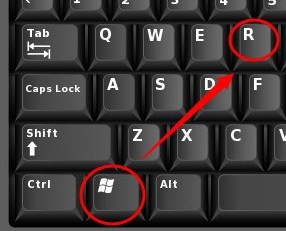

- #Windows r comman how to
- #Windows r comman windows
How to change a directory or open a folder. You can see what files are found in this directory by typing the dir command again. So, in our example, the prompt is now C:\Users\Mrhope\Desktop>. Once you've moved into a new directory, the prompt changes. To move into a directory, we use the cd command, so to move into the Desktop type cd desktop and press Enter. Now that we've seen a list of directories (shown below) in the current directory, move into one of those directories. How to list files in a directory or folder on the computer. See the wildcard definition for other examples and help with using wildcards. For example, to list files or directories that begin with the letter "A" you could type dir a* to list only the AppData directory, in this above example. The dir command can also be used to search for specific files and directories using wildcards. For example, if you want to see all the options for the dir command, refer to our dir command overview for a complete option listing. We offer guides for individual commands, as well. Each of the command options and switches is listed in our DOS command overview. This switch is useful to see all the files and directories in a directory with dozens or hundreds of files. For example, with the dir command, you can type dir /p to list the files and directories in the current directory one page at a time. In the example below, there are 0 files listed and 14 directories, indicated by the status message at the bottom of the output.Įvery command in the command line has options, which are additional switches and commands that can be added after the command. As shown, you are given lots of useful information including the creation date and time, directories (), and the name of the directory or file. Without using any dir options, this is how dir output appears. You should get an output similar to the example image below. Type dir at the prompt to list files in the current directory. For example, dir /? would give the options available for the dir command. If you need help with any of command, type /? after the command. When a file or directory is deleted in the command line, it is not moved into the Recycle Bin. 
File names can have a long file name of 255 characters and a three character file extension.For example, the directory My Documents would be "My Documents" when typed. When working with a file or directory with a space, surround it in quotes.
#Windows r comman windows
The files and directories shown in Windows are also found in the command line.MS-DOS and the Windows command line are not case sensitive.This prompt shows that we're in the C: drive (default hard drive letter) and currently in the Mrhope directory, a subdirectory of the Users directory. In the example below, the user is Mrhope. Windows often starts you at your user directory. In the Search or Run line, type cmd (short for command), and press Enter.Īfter following the steps above, the Windows command line should be shown (similar to the example below).If you need additional information or alternative methods for all versions of Windows, see: How to get to an MS-DOS prompt or Windows command line. Open a Windows command line window by following the steps below. If you are interested in learning about the command line in more detail, see our DOS and command prompt overview, which gives a description and example for every command. Keep in mind that there are over 100 different commands used in MS-DOS and the Windows command line. On this page, you learn how to move around in the command line, find files, manipulate files, and other important commands. This page covers the basics of navigating and using the Microsoft Windows command line.






 0 kommentar(er)
0 kommentar(er)
